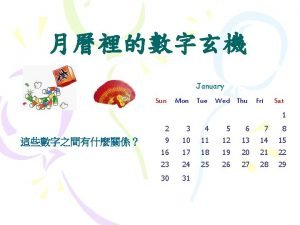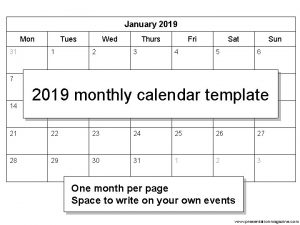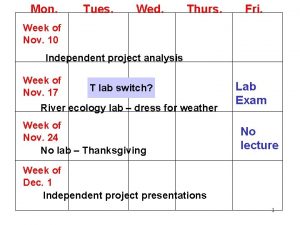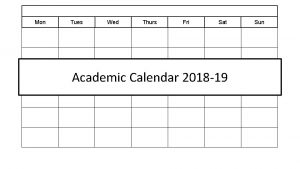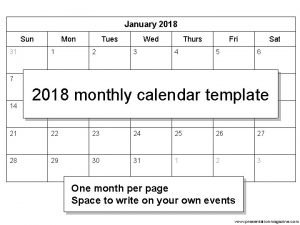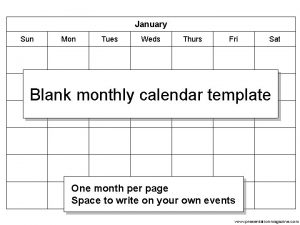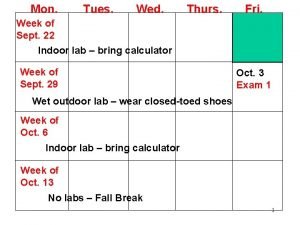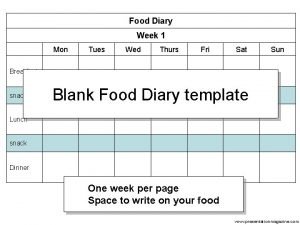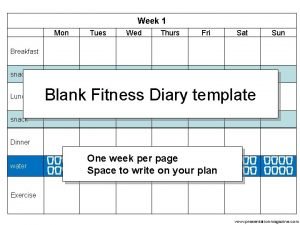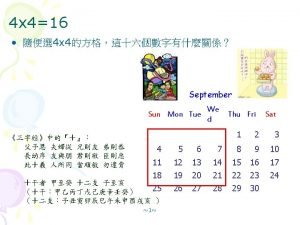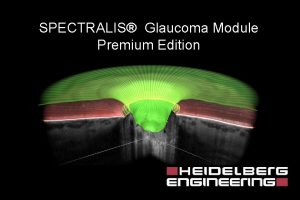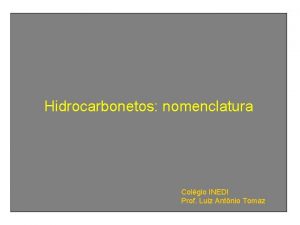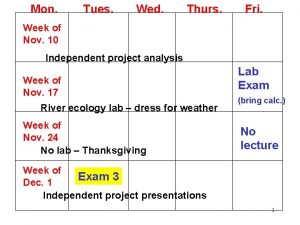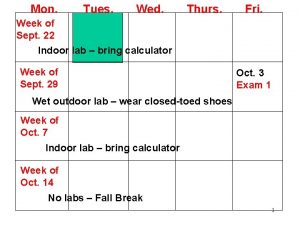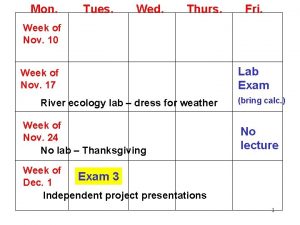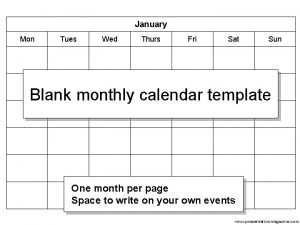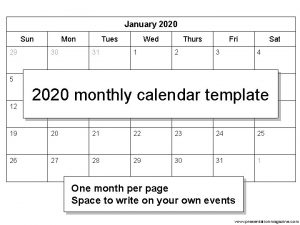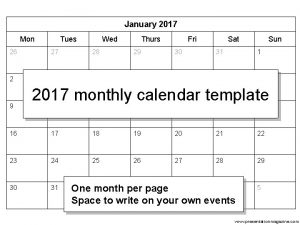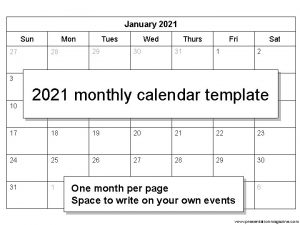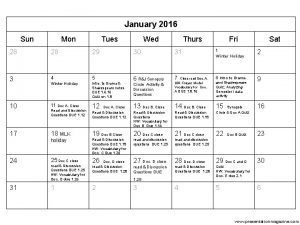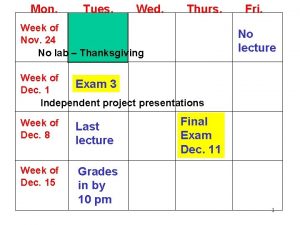Mon Tues Wed Thurs Fri Week of Oct





























- Slides: 29

Mon. Tues. Wed. Thurs. Fri. Week of Oct. 6 Week of Oct. 13 No labs – Fall Break Week of Oct. 20 Class in Library Multimedia Room Wet, muddy outdoor lab – wear closed-toed shoes Week of Oct. 27 Independent project set-up 1

Outline for ecosystems Introduction How does energy move through an ecosystem? How does matter move through an ecosystem? 2

How does matter move through an ecosystem? Matter = elements e. g. , what are ways that a carbon atom moves from one compartment of an ecosystem to another? How fast do carbon atoms move from one compartment to another? 3

Organisms move elements through chemical transformations organic C inorganic C 4

Figure 7. 1 organic inorganic 5

Figure 7. 2 6

How does matter move through an ecosystem? Cycles between inorganic and organic forms and between different compartments of ecosystems Difference between matter and energy movement? 7

Figure 7. 3 8

Cycles of matter water carbon nitrogen phosphorus sulfur Focus on important pools and transfers 9

Water cycle Figure 7. 4 10

C cycle Figure 7. 5 11 Carbon cycle

Figure 7. 6 Biological transformations of carbon 12

Fig. 7. 11 N cycle 13

Figure 7. 11 b e. g. , proteins inorganic forms used by plants Biological transformations of nitrogen 14

P cycle Figure 7. 13 15

Figure 7. 14 a S cycle 16

Figure 7. 14 b Biological transformations of sulfur 17

What do I expect you to know about element cycles? - which forms are available to bacteria, plants, and animals -which transfers are changes in form of the element - which transfers are biological transfers vs. chemical or physical transfers 18

How does matter move through an ecosystem? Nutrient recycling in terrestrial and aquatic ecosystems 19

Nutrient recycling in terrestrial systems - where is it happening? 20

Nutrient recycling in terrestrial systems - new weathering of bedrock provides small amount of nutrients taken up by vegetation each year (~10%) - how do we know that? 21

-mass balance -inputs = outputs -weathering + precipitation =loss in streams calculate by difference measure 22

Organic matter decomposition 1. Leaching of soluble compounds by water 2. Consumption by detritus-feeding orgs. - e. g. , earthworms, millipedes, etc. 3. Breakdown of rest by fungi and bacteria - how do they decompose? What factors affect rate of decomposition? 23

Effect of rainfall on rate of leaf decomposition 24

Which column is larger? Tropical Temperate Litter/living leaf Soil P/plant P Soil N/plant N %of total org C 25

Land use affects phosphorus retention in a system 26

27

Nitrogen fixation can increase nitrogen avail. Litter quality (nitrogen content) of different tree species 28

Mychorrhizae increase nutrient content of plants Fig. 8. 7 29
 Mon tues wed
Mon tues wed Wed thur
Wed thur Wed thurs fri
Wed thurs fri Sun mon tue wed
Sun mon tue wed Mon-tues
Mon-tues Thu tue
Thu tue Mon tues wed thurs fri
Mon tues wed thurs fri Mon and tue
Mon and tue Sun mon tue wed thu fri sat
Sun mon tue wed thu fri sat Mon tue wed thurs
Mon tue wed thurs Mon. tue. wed
Mon. tue. wed Tue and thur
Tue and thur Wed and thur
Wed and thur Sat sun mon
Sat sun mon Mon tues wed
Mon tues wed Mon tue wed
Mon tue wed Mon tues wed
Mon tues wed Tues and thurs
Tues and thurs Mon wed fri
Mon wed fri Mon tues wed
Mon tues wed Sun mon
Sun mon Xxxxxx 2017
Xxxxxx 2017 Tue calender
Tue calender Mon tues
Mon tues Week by week plans for documenting children's development
Week by week plans for documenting children's development Je suis né pour te louer partition
Je suis né pour te louer partition Oct vizsgálat ára
Oct vizsgálat ára Premium sanitas
Premium sanitas Hidrocarbonetos ramificados
Hidrocarbonetos ramificados Formula of alkene
Formula of alkene
